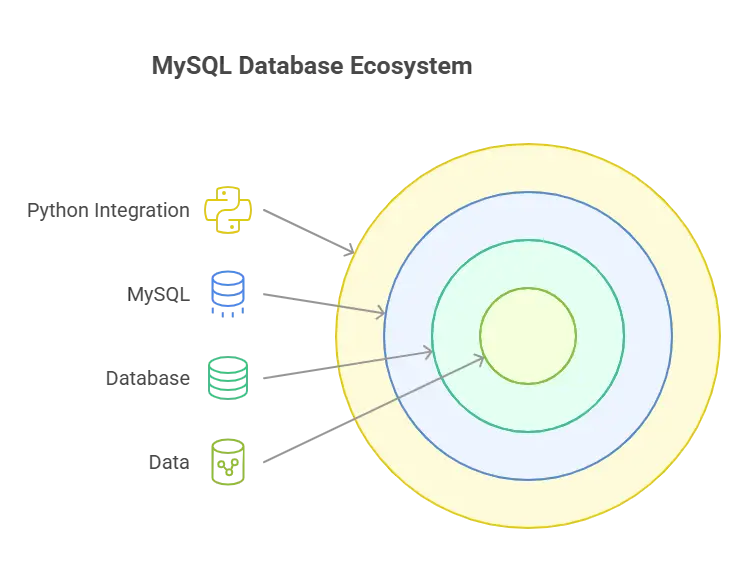Creating Databases in MySQL
We'll explore how to create databases in MySQL using Python. We'll cover everything from the basics of database creation to more advanced techniques for database management.
Introduction to MySQL Databases
What is a Database?
A database is an organized collection of data, typically stored and accessed electronically from a computer system. It provides a systematic way to store, manage, and retrieve data efficiently.
What is MySQL?
MySQL is an open-source relational database management system (RDBMS) that is widely used for building scalable and reliable databases. It offers a robust set of features for managing data and is known for its performance and reliability.
Why Use MySQL with Python?
Using MySQL with Python allows you to leverage the power of a relational database management system within your Python applications. You can store, retrieve, and manipulate data seamlessly, making it an ideal choice for various data-driven applications.

Installing MySQL Connector for Python
Before we begin creating databases in MySQL with Python, you’ll need to install the MySQL Connector for Python, which allows Python programs to communicate with MySQL databases.
You can install it using pip, the Python package manager, by running the following command:
pip install mysql-connector-python
Explanation:
- We import the
mysql.connectormodule, which provides functions for interacting with MySQL databases. - We use the
connect()function to establish a connection to the MySQL database, providing the host, username, password, and database name as parameters. - We check if the connection is successful using the
is_connected()method.
Connecting to MySQL Server
To create databases in MySQL with Python, you first need to establish a connection to the MySQL server. You can do this using the mysql.connector module in Python.
import mysql.connector
# Establish connection to MySQL server
conn = mysql.connector.connect(
host="localhost",
user="username",
password="password"
)
# Check if connection is successful
if conn.is_connected():
print("Connected to MySQL server")
else:
print("Failed to connect to MySQL server")
Explanation:
- We import the
mysql.connectormodule, which provides functions for interacting with MySQL databases. - We use the
connect()function to establish a connection to the MySQL server, providing the host, username, and password as parameters. - We check if the connection is successful using the
is_connected()method.
Creating a Database
Once connected to the MySQL server, you can create a new database using the CREATE DATABASE SQL statement.
# Create a new database
cursor = conn.cursor()
cursor.execute("CREATE DATABASE mydatabase")
print("Database created successfully")
# Close cursor
cursor.close()
Explanation:
- We create a cursor object using the
cursor()method to execute SQL queries. - We execute the
CREATE DATABASESQL statement to create a new database named “mydatabase”. - We print a message to confirm that the database was created successfully.
- Finally, we close the cursor.
We've covered the basics of creating databases in MySQL using Python. We learned how to install the MySQL Connector for Python, establish a connection to the MySQL server, and create a new database.Creating databases is a fundamental aspect of database management, and understanding how to do it programmatically with Python gives you the flexibility to automate database tasks and streamline your workflow. Happy Coding!❤️
Table of Contents

